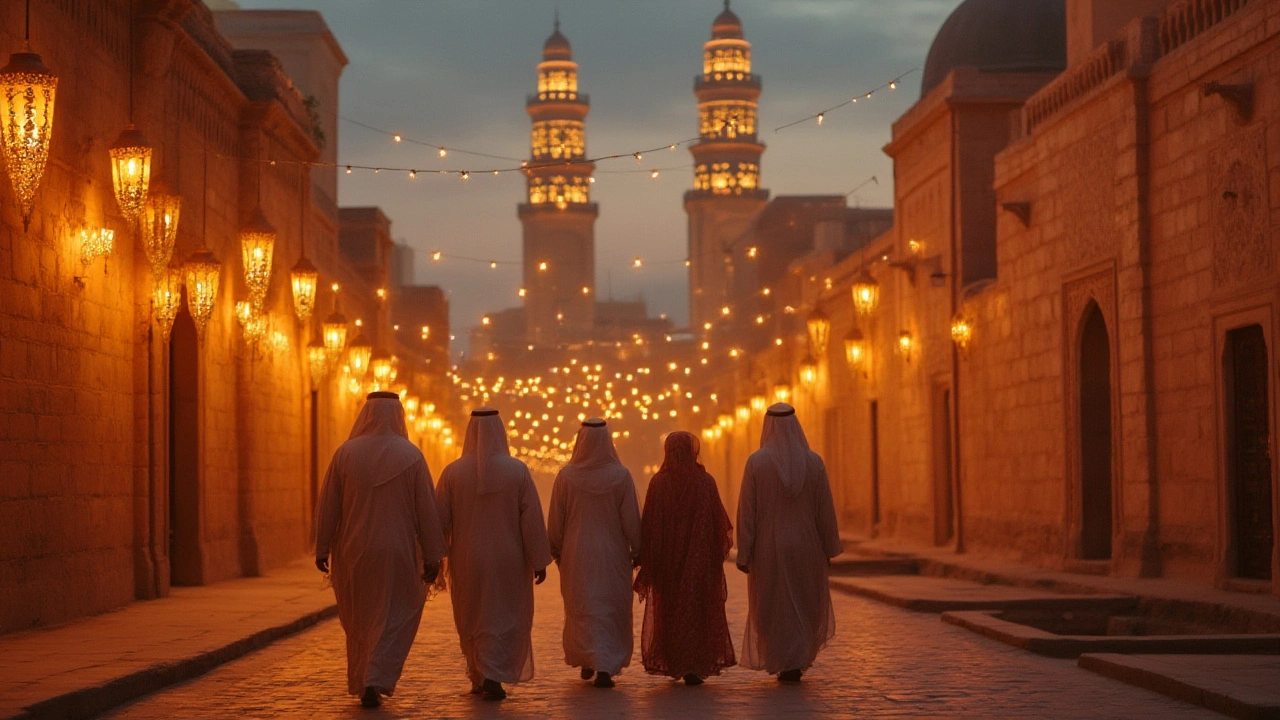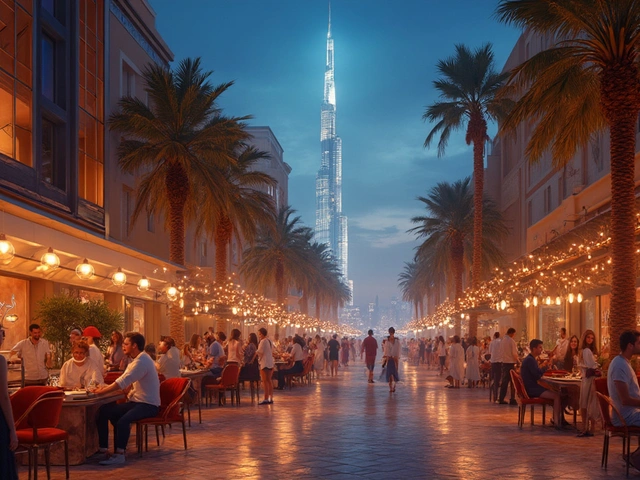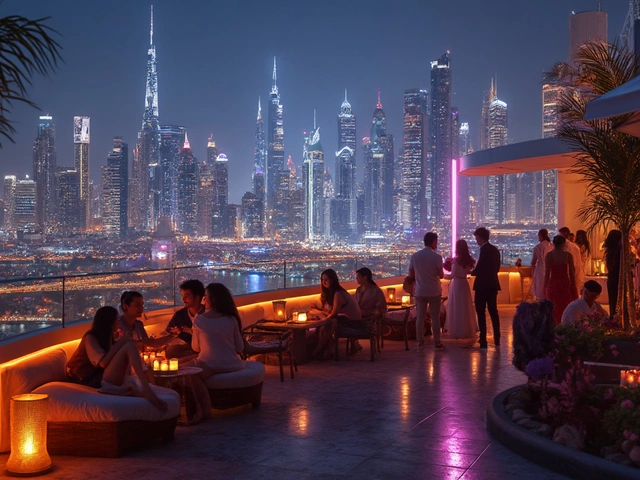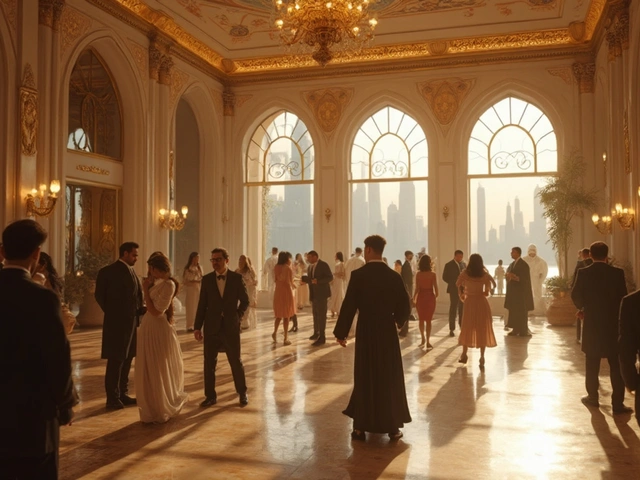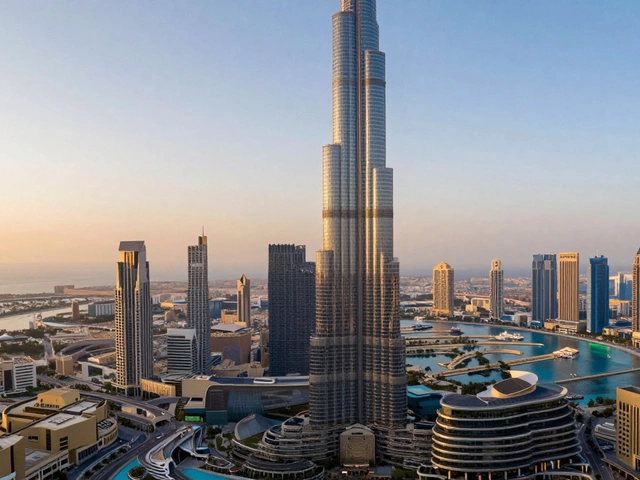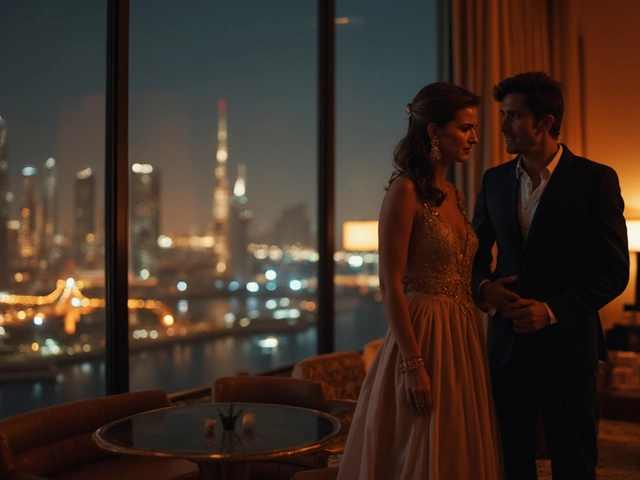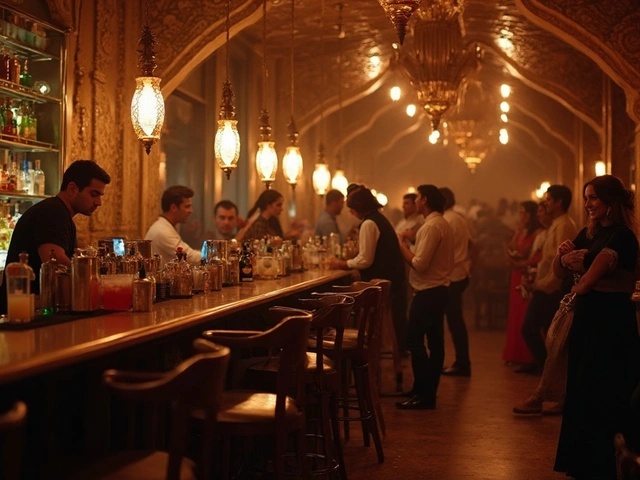You think you know Dubai? Sure, you’ve glanced at the Burj Khalifa, and maybe you’ve wandered Dubai Mall, but the city tells a whole other story if you tune into what locals see. Historical sites in Dubai aren’t just photo ops for Instagram—they’re living proof that this futuristic metropolis has roots, values, and surprises that the guidebooks usually skip. You’d be blown away by the gritty charm behind the glitzy facades, where camel markets once sprawled and the faint smell of oud still lingers, if you know where to look. Historical sites Dubai offers aren’t off-limits time capsules; they’re part of daily life here. Living in Sydney now, I still draw parallels between my walks in The Rocks and the way the heartbeat of Old Dubai throbs through its winding lanes. Far from being stuck in time, these places are in conversation with today’s city—if you pay attention.
Al Fahidi: The Heartbeat of Dubai’s Heritage
Start with Al Fahidi Historical Neighborhood. Locals still call it Bastakiya, and you’ll quickly spot the traditional wind towers, hinting at a time before air conditioners and skyscrapers. Forget about sanitised tours and staged snapshots—you’ll meet artists painting in the sand-colored alleys, and families sharing cardamom chai under canvas awnings. Aya, a fourth-generation textile trader, sells bold Persian fabrics here, telling stories about how her grandfather helped raise the first walls after Iranis fled their homeland. Stop by the Coffee Museum, where the ritual of serving gahwa (spiced Arabic coffee) is about more than refreshment—it's hospitality, friendship, sometimes even sealing a business deal. Locals at XVA Café will share which calligrapher to seek out if you want your name scrawled on papyrus, and kids dart past you, playing just as they did fifty years ago, proving the community heart still beats strong.
Don’t miss Alserkal Avenue nearby—a modern twist in an old setting, home to Dubai’s creative buzz. It looks artsy now, but old-timers remember when soap was bundled here for trade. The region's mix of Indians, Persians, Africans, and Arabs turns every alley into a lesson in co-existence. If you really want to impress your friends or local colleagues, mention the annual Sikka Art Fair: held in these lanes, attracting everyone from Emirati sculptors to street performers from Deira. Want a tip? Visit during early Ramadan evenings; you’ll see free iftar tents pop up, and get offered a seat by strangers with plates of harees and dates. That’s Dubai’s unspoken tradition right there.
You want facts? The oldest structures here go back to the 1890s, built with coral and gypsum. According to the Dubai Culture and Arts Authority, Bastakiya held around 60 houses by 1930—most now restored by passionate locals. Here’s a pro tip: skip the big group tours and simply wander. Strike up a chat at Majlis Gallery—most Emiratis love to share stories about growing up in the area, especially if you’re genuinely curious. It’s how you learn that the sand under your feet once blew westward in massive shamas, covering alleyways and making every house a tiny fortress against the dust. Don’t worry if you get lost—the point is, you’re meant to. That’s where the real stories live.
Dubai Creek: The Lifeline of Old and New
If you want to know where Dubai's pulse really beats, head to Dubai Creek, known locally as Khor Dubai. Forget what you’ve seen in advertising campaigns—this waterway shaped the city, and locals see it as the original heart of trade, culture, and hustle. Step onto the old wooden abra boats for a one-dirham ride, and you'll glide past a living collage of modern high-rises and bric-a-brac souks that haven't changed in generations.
Ask any Dubai resident above the age of 40, and they’ll tell you stories about pearl divers who once risked their lives in these waters—back before oil made fortunes. In the 1960s, the Creek was Dubai’s main global link; dhows full of goods from India, East Africa, and Iran would dock here, and barter deals still buzz at Deira’s wharf. You’ll spot workers hauling sacks of spices and electronics, shouting in Hindi, Arabic, and Swahili, as deals fly back and forth faster than WhatsApp texts. Locals will also remind you: the annual rowing regatta isn’t just sport, it’s a nod to when survival depended on how well you knew these currents. In fact, the ancient art of building dhows is still practiced in tucked-away workshops along the Creek’s edge.
Now for something you might not know—locals cherish the Gold and Spice Souks near the Creek for more than just bargains. Family engagement rings that survive generations still come from these bustling lanes. Saffron, turmeric, and frankincense aren’t just shopping items; they're part of home remedies passed down, with every shopkeeper ready to recommend blends for coughs, headaches, or even lucky omens for new businesses. If you’re polite and patient, you’ll often be invited behind the counter for a cup of tea and a look at photos of great-grandparents, proof of their long-standing family business. Want to blend in and avoid tourist markups? Wear casual clothes, never rush your bargaining, and start conversations rather than snapping photos silently. Souk culture is a two-way street in Dubai.
Here's a fun fact for context: an estimated 700,000 people cross the Creek weekly, most commuting between Deira and Bur Dubai using abras. Here’s a quick stats table to help you get your head around the scale:
| Dubai Creek (2024 data) | |
|---|---|
| Daily Abra Passengers | Over 40,000 |
| Annual Dhow Shipments | 110,000+ |
| Spice Vendors | Over 150 |
| Gold Shops | More than 300 |
Just try finding that kind of density anywhere else in the city. Want local flavor? Grab luqaimat (sweet dumplings in syrup) from a nearby street vendor. There’s always something unexpected waiting—witness a spontaneous shisha session, or someone reciting Nabati poetry to his friends. The Creek, for locals, is never just a backdrop; it's a living, ever-changing arena.
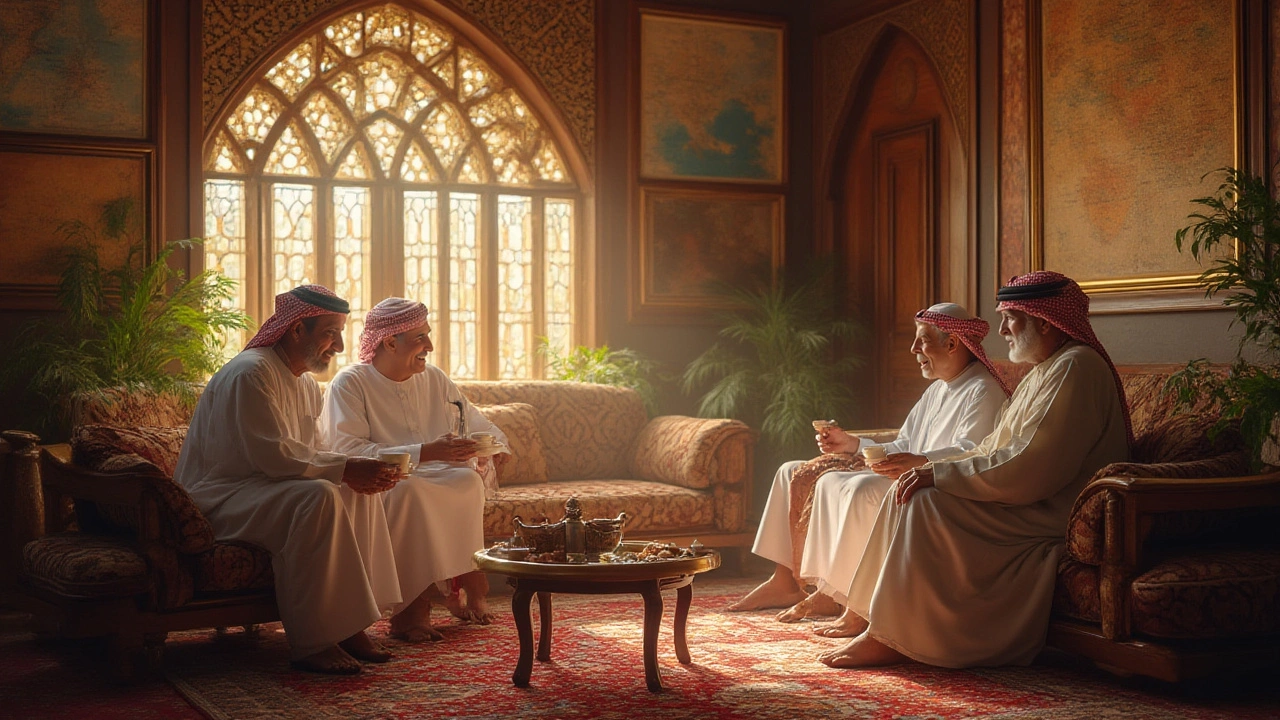
Cultural Touchpoints: Mosques, Forts, and Marketplaces
Walking through Dubai, you can't help but notice the many minarets and bastions rising above residential areas. They aren't just relics—they're still central to how the community works and plays. Locals see Al Fahidi Fort, now Dubai Museum, as more than a tourist stop; it was a military post, a royal residence, even a prison at times. Many Emiratis have relatives who once worked in its offices. The audio-visual dioramas inside might seem old-school, but step outside and chat with elders sipping tea, and you’ll get real stories—like how the fort shielded families from tribal conflicts, or how children used to sneak in during hot afternoons seeking shade.
You can’t ignore the Grand Mosque in Bur Dubai either. Its 70-meter minaret is visible from all around, and its call to prayer slices through Dubai’s constant bustle. While non-Muslims can’t go inside, locals will tell you about Ramadan walks, when streets around the mosque transform with twinkling lights, free food, and spontaneous poetry slams. If you’re lucky, you’ll be invited into a neighbor’s home during Eid—expect endless plates, laughter, and the inevitable card game showdown.
Don’t skip the Textile Souk, either—unlike tourist-heavy malls, this one’s still run by families who’ve been trading fabrics, buttons, and sequins here since before the Union. Locals swear by vendors who can spot a real Kashmiri shawl from a fake at twenty paces. If you ask for a discount, be ready for a practiced debate and more than a few jokes about your bargaining skills. Approaching traditions with respect—not snapping a selfie during prayer times, for instance—gets you a warm response and perhaps a behind-the-scenes peek into how trade links families from Kabul to Cairo.
Local events are the real secret sauce—catch the Dubai Shopping Festival’s historical flash mobs, or National Day parades that sweep along old Dubai’s lanes, where Emirati kids in cultural dress play at being Pearl Divers or camel herders. Sports fans can sometimes witness falconry tournaments or traditional boat races, bringing a taste of old Arabia into 21st-century life.
Hidden Gems: Forgotten Corners and Modern Heritage
It’s easy to be distracted by Dubai’s new landmarks, but locals prize their hidden heritage as fiercely as their shiny skyscrapers. Sneak past Al Shindagha’s less-touristed backstreets and discover heritage houses, where restored sandoq (wooden chests) and ceiling fans whirl slow, warding off the Gulf heat. Small museums, like the Camel Museum or the House of Sheikh Saeed Al Maktoum, show off the city’s trading legacy—and if the exhibit seems sleepy, corner a staffer for off-the-record tales about royal hunting trips or the first telephone lines.
Jump to Jumeirah Mosque—yes, it’s famous, but talk to the volunteers at the daily 'Open Doors, Open Minds' tour, and you’ll realize how much locals value conversations over tourism. Staff are known for fielding deep questions about Emirati daily life, debunking stereotypes, and sharing tips on where to find authentic machboos or saffron ice cream in Satwa. If you time your visit right, you might stumble onto a community-wide wedding parade, complete with drumming troupes and nose-to-forehead greetings.
Locals in Dubai also have a habit of celebrating the city’s layered history through food. Small cafeterias in Karama or old Satwa dish out recipes unchanged since the 1970s—and yes, the same families still run most spits and grills. Order a plate of balaleet (sweet vermicelli and egg) or a sunset karak chai from a well-worn thermos on a Deira stoop, and you’ll be joining an evening tradition older than most city suburbs. Neighbors wave, gossip flips between Arabic, Malayalam, and Tagalog, and everyone has a story about their connection to the 'real' Dubai.
Not everything old has stayed fossilized, either. City Walk’s open-air murals and experimental sculptures are a nod to stories from Al Satwa’s older Filipino, Pakistani, and Lebanese communities. Museum of the Future may be a headline-grabber, yet Emirati teens studying there do research projects about their grandparents’ pearling boats. Seek out government or school programs celebrating Heritage Week—they invite everyone, not just Emiratis, to repaint old souk walls or take evening dhow rides, showing just how much preserving a sense of place matters in Dubai.
To truly get under Dubai’s skin, approach each historical site less as a static monument and more like someone’s family album. Ask questions, linger where you see locals, and treat every corner as a potential memory. That’s how you start seeing Dubai not just as a city of records or riches, but as a living diary, open to anyone willing to slow down and look through local eyes.

